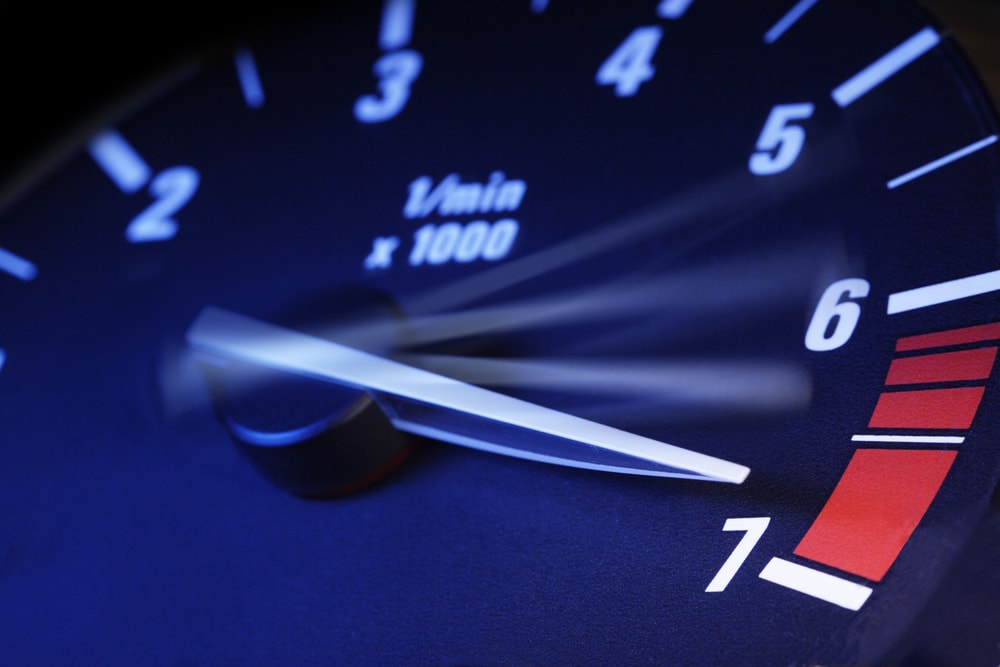Tachometer Purchasing Guide: Features to Look for and Best Brand names
Wiki Article
The Relevance of a Tachometer in Checking Engine Rate and Performance in Automotive Applications
In the world of automotive engineering, the tachometer stands as a crucial tool in the chauffeur's arsenal, offering a straight window into the inner functions of an automobile's engine. Beyond its function as a plain gauge of changes per minute (RPM), the tachometer serves as an important tool for lovers and specialists alike, supplying real-time understandings right into engine efficiency and health and wellness.Relevance of Monitoring Engine RPM
Checking engine RPM, or transformations per minute, is an essential aspect of automobile maintenance and performance assessment. Engine RPM directly associates with the rate at which the engine's crankshaft turns, suggesting just how promptly the engine is running - tachometer. By keeping an eye on RPM, mechanics can analyze the wellness of the engine, spot prospective problems, and fine-tune performance. An uncommon RPM reading may indicate issues such as engine misfires, damaged trigger plugs, or problems with the fuel shipment system. Consistently high RPM readings could suggest aggressive driving behaviors or the requirement for a greater gear change to enhance gas effectiveness.Furthermore, keeping an eye on engine RPM is essential for performance analysis in auto racing and high-performance automobiles. In recap, monitoring engine RPM is not only essential for detecting problems but additionally for maximizing engine efficiency in different automobile applications.

Benefits of Real-Time Information
In automotive applications, real-time data plays a vital duty in giving immediate insights into the performance and problem of the lorry. By continually monitoring various specifications such as engine speed, temperature, fuel intake, and a lot more, real-time data provides countless advantages that add to boosted effectiveness and safety when driving.
Furthermore, real-time information assists in efficiency optimization by providing instant responses on driving habits and engine performance. Vehicle drivers can adjust their actions in real-time based on this information to attain far better fuel economy and extend the life expectancy of their vehicle.

In addition, real-time information plays an important function in modern automotive diagnostics, allowing technicians to rapidly detect and attend to malfunctions. This results in lowered downtime, reduced upkeep expenses, and eventually, enhanced total vehicle reliability and longevity (tachometer). By utilizing the power of real-time data, auto stakeholders can make educated choices that favorably influence both the efficiency get more and long life of the lorry
Effect On Gear Shifts
The tachometer plays a crucial function in enhancing equipment shifts by giving real-time engine speed information to the driver. When coming close to the redline on the tachometer, it indicates the driver to upshift to protect against over-revving the engine and triggering possible damages.Additionally, the tachometer help in accomplishing smoother equipment transitions, particularly in manual transmissions. By checking engine speed, vehicle drivers can implement gear changes at the ideal RPM variety, minimizing snagging movements and decreasing endure the transmission components. This precision in gear adjustments not just boosts driving convenience however additionally adds to fuel performance.
Enhancing Gas Efficiency
Offered the important role the tachometer plays in optimizing equipment shifts for performance and why not try here engine health, it straight adds to making the most of gas effectiveness in auto applications. By supplying review real-time responses on engine speed, the tachometer helps chauffeurs in maintaining one of the most reliable RPM range for gas economy. When vehicle drivers constantly monitor the tachometer and readjust their driving habits appropriately, they can stay clear of unneeded gas usage brought on by over-revving or carrying the engine.In addition, the tachometer aids motorists recognize the most fuel-efficient equipment to be in at any kind of given moment, preventing the engine from functioning tougher than needed. In conclusion, the tachometer serves as a beneficial device in boosting fuel efficiency by promoting ideal driving behaviors and determining areas for renovation in the automobile's efficiency.

Maximizing Engine Longevity
The tachometer's role in keeping an eye on engine speed and performance contributes in ensuring the longevity of automotive engines. By making use of the tachometer properly, vehicle drivers can enhance engine long life via mindful RPM management. Constantly revving an engine too expensive can lead to excessive deterioration on critical elements, such as the pistons, shutoffs, and bearings. In time, this can cause decreased engine efficiency and possible malfunctions. Keeping an eye on the tachometer allows motorists to remain within the suggested RPM array for their lorry, avoiding unnecessary pressure on the engine and extending its life-span.
Final Thought
To conclude, the tachometer plays an essential role in keeping track of engine speed and performance in vehicle applications. By giving real-time information on RPM, it enables efficient gear changes, improved gas effectiveness, and maximized engine durability. This tool is important for preserving ideal engine efficiency and making certain the general capability of a car.Report this wiki page